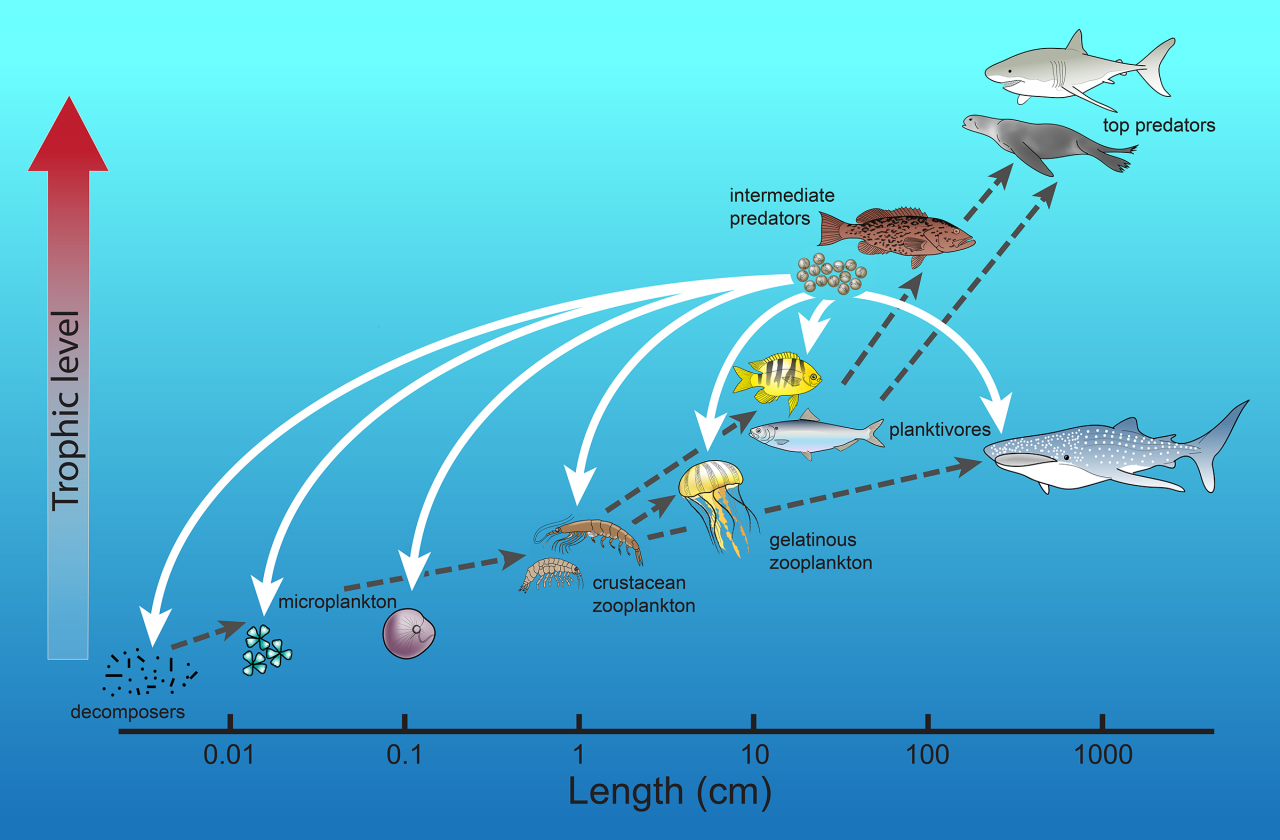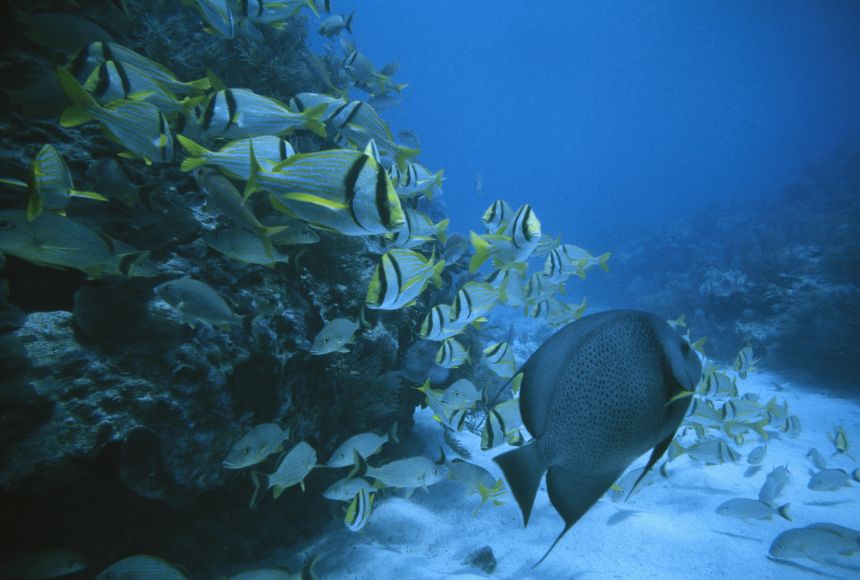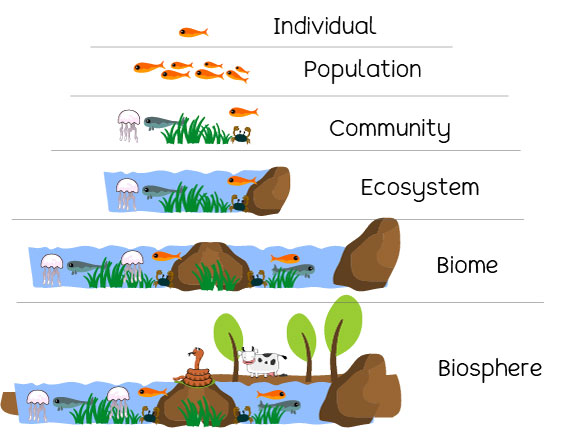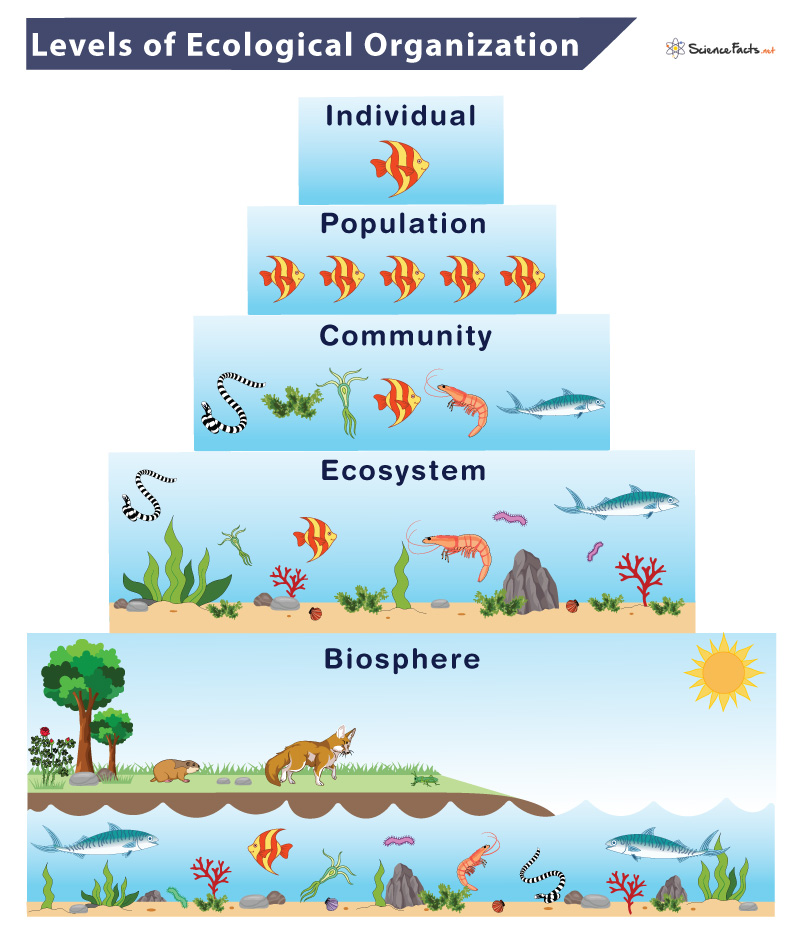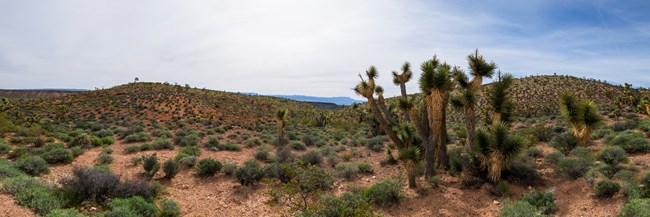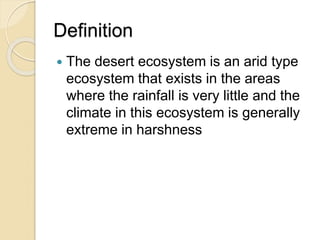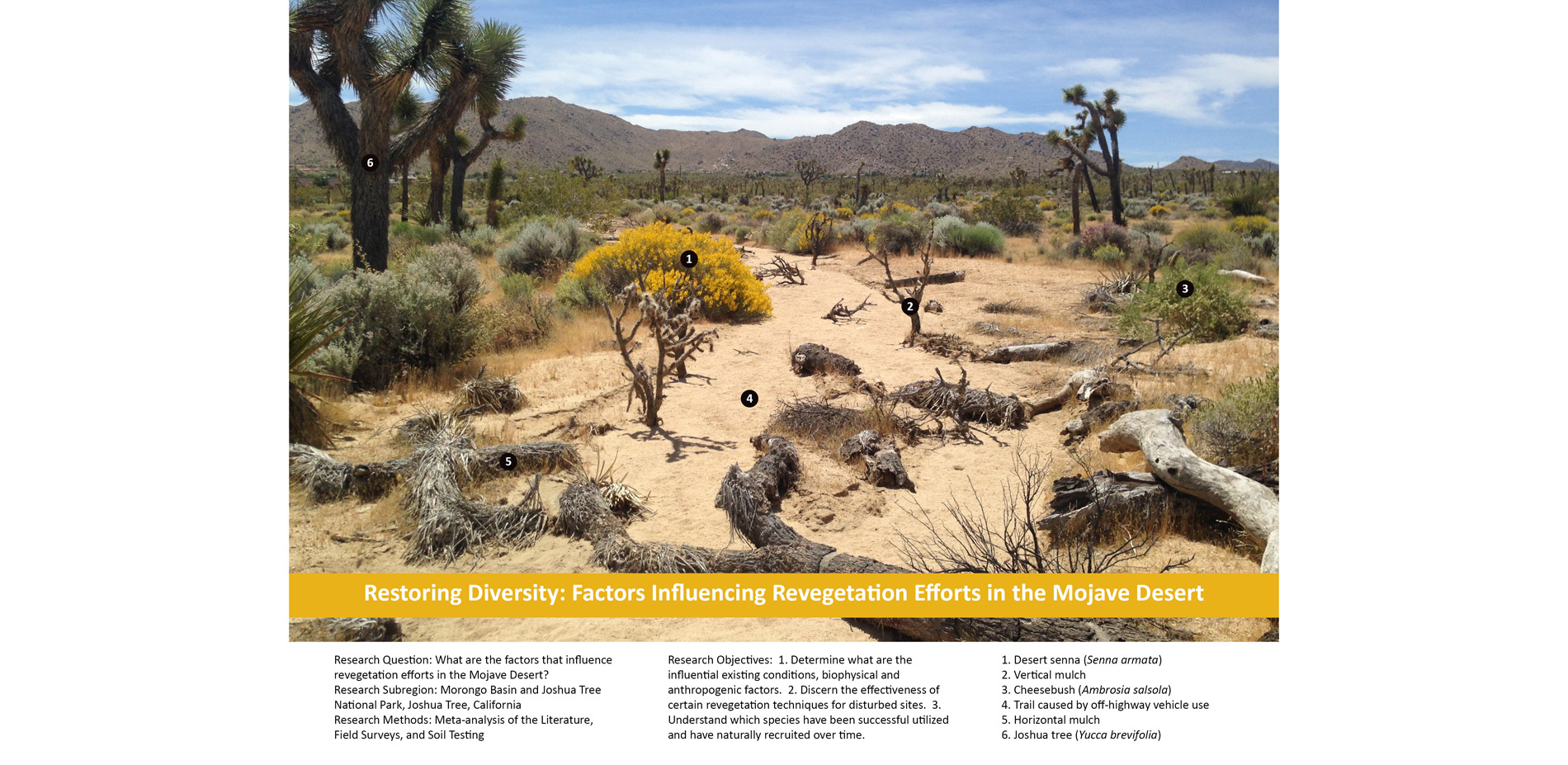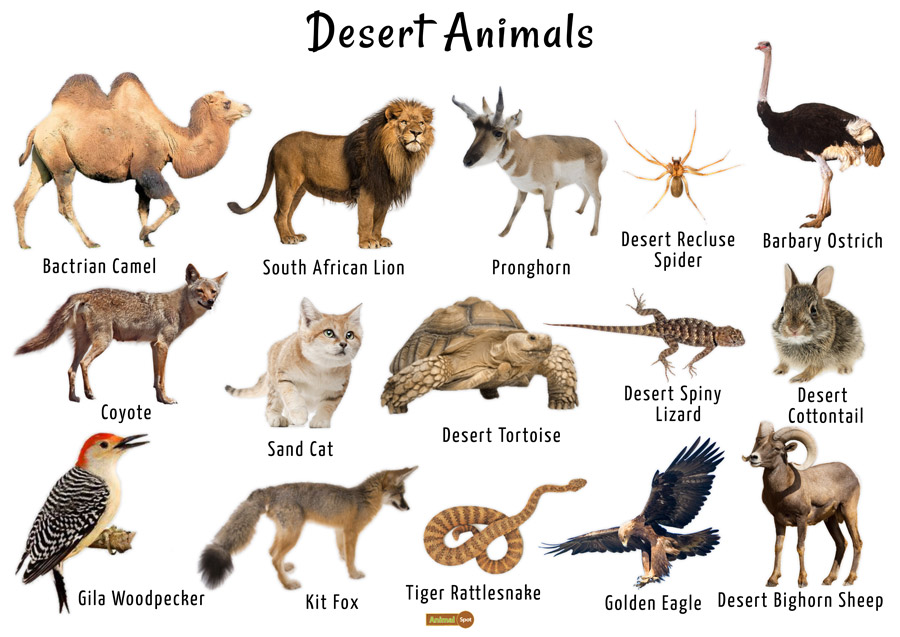Topic ecosystem of marine: Dive into the "Ecosystem of Marine" and explore the ocean"s vast, interconnected web of life, where every creature plays a role in maintaining its delicate balance. Discover the wonders beneath the waves and the importance of preserving our marine world.
Table of Content
- What are the different zones and features of marine ecosystems?
- Types of Marine Ecosystems
- Marine Food Chains and Biodiversity
- Human Impacts on Marine Ecosystems
- Conservation Efforts and Marine Protected Areas
- Emerging Threats and Climate Change Effects
- YOUTUBE: Ocean Ecosystems: Exploring the Aquatic World
- Marine Ecosystem Services and Human Dependence
What are the different zones and features of marine ecosystems?
Marine ecosystems have different zones and features, which can be categorized based on water depth and shoreline characteristics. Here are the main divisions:
- The Intertidal Zone: This zone is the area between the high and low tide marks. It is exposed to the air and experiences regular changes in water levels.
- The Neritic Zone: Also known as the coastal zone, this area extends from the shoreline to the edge of the continental shelf. It has relatively shallow waters and receives abundant sunlight.
- The Oceanic Zone: The oceanic zone refers to the vast open part of the ocean beyond the continental shelf. It is deeper and receives less sunlight compared to the neritic zone.
- The Epipelagic Zone: Also called the sunlight zone, it is the uppermost layer of the oceanic zone where sunlight penetrates. This zone supports a wide variety of marine life due to the availability of light for photosynthesis.
- The Mesopelagic Zone: The mesopelagic zone is found below the epipelagic zone and extends from approximately 200 to 1,000 meters deep. It is often referred to as the twilight zone because only faint traces of sunlight reach this depth.
- The Bathypelagic Zone: This zone is located beneath the mesopelagic zone and ranges from about 1,000 to 4,000 meters deep. Sunlight cannot reach this zone, so organisms here rely on bioluminescence or other means of survival.
- The Abyssopelagic Zone: The abyssopelagic zone is the deep, dark region of the ocean found below the bathypelagic zone. It reaches depths of 4,000 to 6,000 meters or more. Very few organisms can survive in this extreme environment.
- The Hadal Zone: This zone includes the deepest parts of the ocean, such as ocean trenches. It extends beyond 6,000 meters and is known for its extreme pressure, cold temperature, and limited food resources.
Note that the above zones are not the only divisions within marine ecosystems, and there can be further subdivisions based on specific characteristics and factors.
READ MORE:
Types of Marine Ecosystems
The marine ecosystem, covering over 70% of the Earth"s surface, is a vast and diverse realm that hosts an array of unique habitats. These ecosystems vary greatly in characteristics and the life they support, from shallow sunlit coral reefs to the mysterious depths of the open ocean. Here, we explore the primary types of marine ecosystems, each playing a crucial role in the global ecological balance.
- Estuaries: Where freshwater from rivers meets and mixes with saltwater from the ocean, creating nutrient-rich environments that support diverse plant and animal life.
- Mangrove Forests: Coastal ecosystems found in tropical and subtropical regions, characterized by salt-tolerant trees known as mangroves that are crucial for coastal protection.
- Salt Marshes: Located on coastlines, salt marshes are flooded and drained by salt water brought in by the tides, serving as important habitats for bird species and acting as natural water filtration systems.
- Coral Reefs: Known as the rainforests of the sea, coral reefs support some of the highest biodiversity on Earth. They are found in warm, shallow waters and are critical for the survival of many marine species.
- Open Ocean: The largest marine ecosystem, it extends from the coastal areas to the deep sea, covering vast areas with varying depths and light availability, supporting species from microscopic plankton to the largest whales.
- Deep Sea Ecosystems: Beyond the reach of sunlight, these areas are home to some of the most unique life forms on Earth, adapted to live in extreme conditions of darkness, cold, and high pressure.
- Hydrothermal Vents: Found on the ocean floor, these are hot springs that release heated water from beneath the Earth"s crust, supporting unique communities that rely on chemosynthesis rather than photosynthesis.
- Polar Seas: Encompassing both the Arctic and Antarctic waters, these ecosystems are influenced by ice cover, extreme cold, and seasonal darkness, yet support a variety of life adapted to these conditions.
Each of these ecosystems not only supports a rich variety of marine life but also plays vital roles in the Earth"s environmental processes, including climate regulation and the carbon cycle.
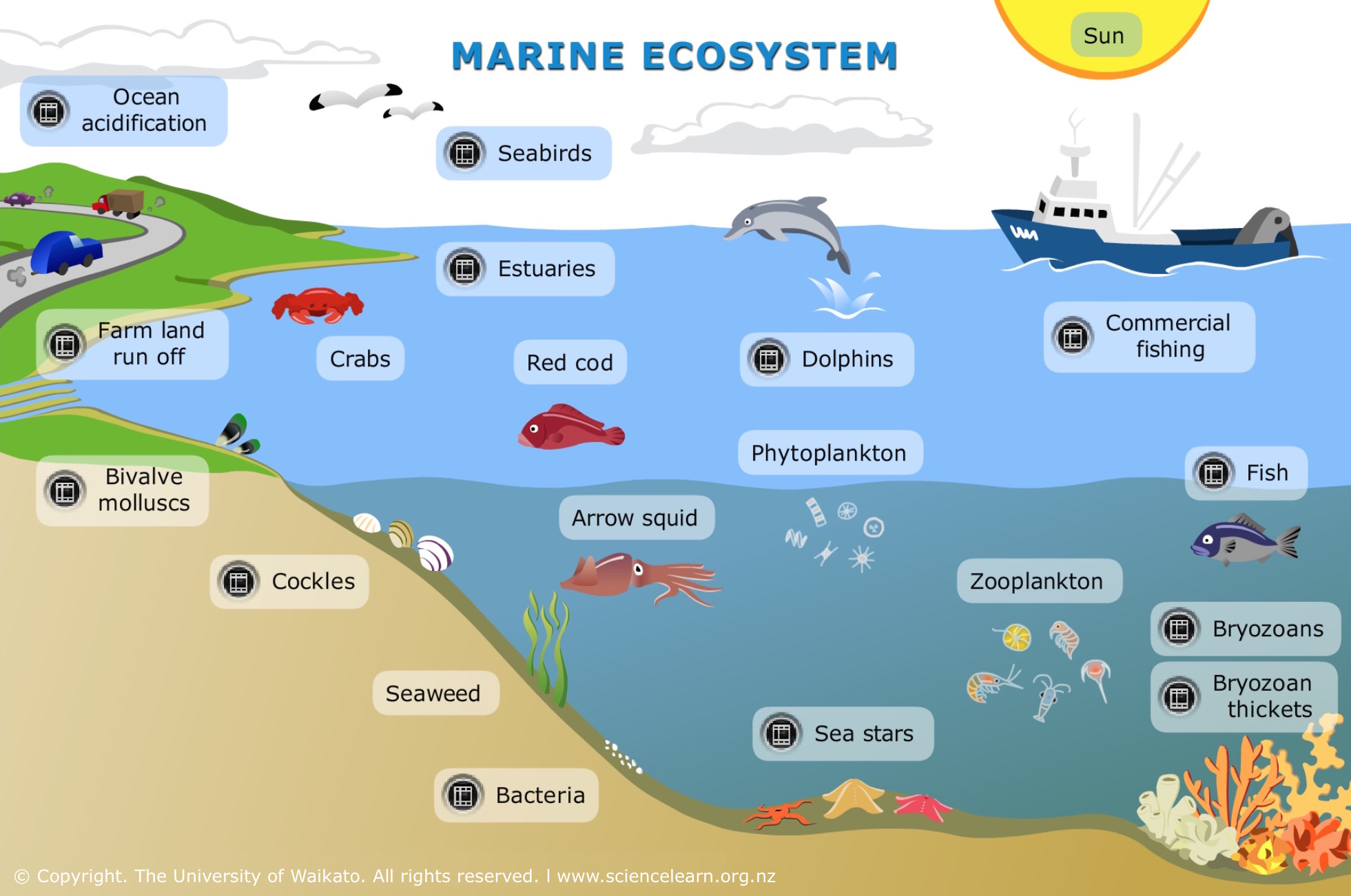
Marine Food Chains and Biodiversity
The marine ecosystem showcases an intricate food web, starting with the foundational primary producers and moving up through various trophic levels to apex predators. This section delves into the complexity and diversity of life forms within marine food chains, highlighting their significance in maintaining ecological balance and supporting biodiversity.
- Primary Producers: At the base of the food chain, phytoplankton, microscopic algae, and some bacteria harness the power of sunlight to produce energy through photosynthesis, forming the primary source of food for many marine species.
- Primary Consumers: These include small fish, zooplankton, and other herbivores that feed on primary producers, converting the solar energy stored in plants into animal biomass.
- Secondary Consumers: Predatory fish, certain species of whales, and small marine mammals that consume primary consumers, transferring energy up the food chain.
- Apex Predators: At the top of the marine food web are the apex predators, such as sharks, orcas, and large species of cetaceans, which have no natural predators and play a crucial role in maintaining the health and balance of marine ecosystems.
Biodiversity within marine ecosystems is vast, with habitats ranging from the sunlit upper layers of the ocean to the dark depths of the sea floor. This diversity includes countless species of fish, invertebrates, mammals, and plants, each adapted to their specific environmental niche. Biodiversity is crucial for the resilience of marine ecosystems, enabling them to withstand and recover from environmental stresses and changes.
Marine biodiversity is not only important for ecological reasons but also supports human economies through fisheries, tourism, and as a source of new medicines. Protecting marine biodiversity ensures the health of the oceans and the continuation of essential services they provide to the planet.
Human Impacts on Marine Ecosystems
Human activities have significantly affected marine ecosystems, with impacts ranging from pollution to overfishing, habitat destruction, and climate change. While these challenges are formidable, understanding and mitigating our impact can help preserve the ocean"s health and biodiversity.
- Pollution: Marine pollution, including plastic waste, oil spills, and agricultural runoff, harms marine life and disrupts ecosystems. Plastics can entangle animals or be ingested, causing injury or death, while chemicals can poison water and organisms.
- Overfishing: Intensive fishing practices have led to the depletion of fish stocks, altering marine food webs and reducing the biodiversity of marine species. Sustainable fishing practices are crucial for the recovery and maintenance of fish populations.
- Habitat Destruction: Coastal development, dredging, and bottom trawling destroy crucial marine habitats such as coral reefs, seagrass beds, and mangroves, affecting the species that depend on them for survival.
- Climate Change: Rising ocean temperatures, ocean acidification, and sea level rise impact marine ecosystems globally. These changes can lead to coral bleaching, shifts in species distribution, and increased vulnerability to diseases.
- Invasive Species: The introduction of non-native species to marine environments can disrupt local ecosystems, outcompeting or preying upon native species and altering the ecological balance.
Efforts to mitigate human impacts include establishing marine protected areas, adopting sustainable fishing practices, reducing pollution through better waste management, and global initiatives to combat climate change. By taking action, we can help ensure the health and resilience of marine ecosystems for future generations.
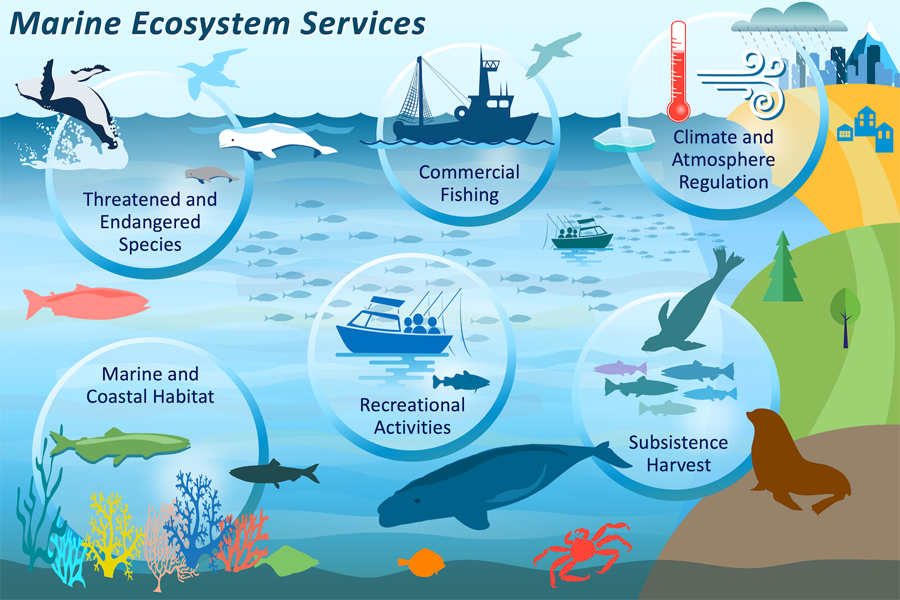
Conservation Efforts and Marine Protected Areas
Conservation efforts for marine ecosystems are crucial to preserving biodiversity, supporting sustainable use of resources, and protecting vulnerable habitats. These initiatives range from local to global scales, involving a variety of stakeholders, including governments, NGOs, communities, and scientists.
- Marine Protected Areas (MPAs): MPAs are designated regions of the ocean where human activities are more strictly regulated than the surrounding waters to protect natural or cultural resources. They vary widely in purpose, from fully protected marine reserves to areas allowing certain types of fishing or tourism.
- Species Protection: Efforts to protect endangered marine species through legislation, such as the Marine Mammal Protection Act and the Endangered Species Act, aim to prevent extinction and promote population recovery.
- Habitat Restoration: Projects focused on restoring vital habitats, such as coral reefs, mangroves, and seagrass beds, help to increase biodiversity, enhance coastal protection, and support fisheries.
- Sustainable Fisheries: Implementing sustainable fishing practices and quotas to prevent overfishing, reduce bycatch, and maintain healthy fish stocks is essential for the long-term viability of marine ecosystems.
- Plastic Pollution Reduction: Efforts to reduce marine plastic pollution include improving waste management systems, banning single-use plastics, and promoting recycling and cleanup campaigns.
- Climate Change Mitigation: Addressing the root causes of climate change through reducing greenhouse gas emissions and promoting renewable energy sources is critical to protecting marine ecosystems from warming waters and ocean acidification.
These conservation efforts, along with research and education, are key to ensuring the health and resilience of marine ecosystems. By safeguarding these natural treasures, we can preserve their beauty, biodiversity, and the benefits they provide to humanity for generations to come.
Emerging Threats and Climate Change Effects
Marine ecosystems face a range of emerging threats that exacerbate the challenges posed by established issues like pollution and overfishing. Climate change amplifies these threats, altering oceanic conditions and endangering the balance of marine life. Understanding these threats is crucial for developing effective mitigation strategies.
- Ocean Acidification: Increased CO2 levels are making oceans more acidic, affecting the ability of species such as corals and shellfish to build their skeletons and shells, which are vital for their survival and for ecosystem structure.
- Warming Waters: Rising ocean temperatures impact marine species" migration patterns, breeding cycles, and habitats, leading to changes in biodiversity and ecosystem dynamics.
- Sea Level Rise: As ice caps melt, rising sea levels threaten coastal habitats and human communities, leading to loss of biodiversity and increased vulnerability to storms.
- Deoxygenation: Warmer waters hold less oxygen, leading to "dead zones" where life is unsustainable. This threatens fish stocks and disrupts marine food webs.
- Increased Storm Intensity: Climate change contributes to more frequent and severe weather events, damaging coral reefs, kelp forests, and other critical habitats through physical destruction and increased sedimentation.
- Shifts in Species Distribution: As ocean temperatures change, species may migrate to cooler waters, disrupting local ecosystems and fisheries dependent on traditional species distributions.
Addressing these emerging threats requires global cooperation and concerted efforts in research, policy-making, and community engagement. By understanding and mitigating the impacts of climate change, we can work towards a resilient future for marine ecosystems and the biodiversity they support.

Ocean Ecosystems: Exploring the Aquatic World
Dive into a mesmerizing world of azure beauty with our enchanting video on the ocean. Immerse yourself in the breathtaking landscapes and vibrant marine life that make our oceans truly one of a kind.
Marine Ecosystem Services and Human Dependence
Marine ecosystems, encompassing vast and diverse environments from coral reefs and mangroves to seagrass meadows and estuaries, provide essential services that are foundational to human wellbeing and economic stability. These ecosystems play a critical role in supporting a wide array of life, offering habitat and nursery grounds for countless species, including many that are crucial for global food security.
- Biodiversity Support: Coral reefs and mangroves, for instance, harbor a significant proportion of the world"s marine biodiversity, serving as the cornerstone for the food web and offering shelter and spawning sites for fish and other marine life.
- Climate Regulation: Marine plants, including seagrasses, absorb carbon dioxide and help mitigate climate change. Mangroves and salt marshes are particularly efficient at carbon sequestration, capturing carbon from the atmosphere and storing it in their biomass and sediments.
- Protection Against Erosion: The root systems of mangrove forests and the structure of coral reefs and salt marshes protect shorelines from erosion caused by storms and waves, safeguarding coastal communities and habitats.
- Water Purification: Ecosystems such as seagrass meadows and estuaries filter pollutants from the water, improving water quality by absorbing excess nutrients and contaminants.
- Economic Benefits: Beyond their ecological roles, these ecosystems contribute significantly to the economy by supporting fisheries, tourism, and recreational activities, which are vital sources of income for millions of people worldwide.
Despite their importance, marine ecosystems face numerous threats from human activities, including pollution, overfishing, and climate change, which endanger their ability to provide these crucial services. Conservation efforts and sustainable management practices are essential to protect these vital resources and ensure their benefits continue to support future generations.
READ MORE:
Understanding Marine Ecosystems
Explore the wonders of the marine world with our captivating video. From stunning coral reefs to graceful dolphins, venture into the depths as we unveil the hidden treasures that lie beneath the surface.
